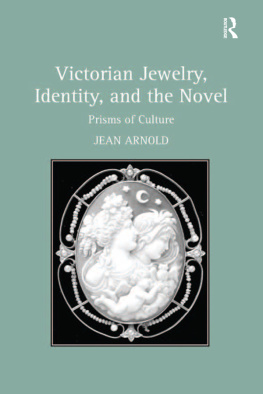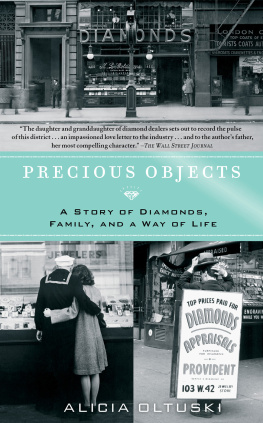Appendix
A 1675 Description of the Diamond Mines
BY [ PROBABLY ]
NATHANIEL CHOLMLEY
A Description of the Diamond Mines was published in Philosophical Transactions of the Royal Society of London, the worlds first scientific journal, in 1677 (Cholmley 1677). It was subsequently also published in Miscellanea Curiosa: Containing a collection of Curious Travels, Voyages, and Natural Histories of Countries, As they have been Delivered in to the Royal Society, vol. 3, 1707, printed by W.B. for James and Jeffery Wale, London (pp. 23855).
The handwritten draft, dated 1675, survives in the British Library (Egerton MS 2543 22429), and apart from some minor spelling variations (mainly in the place names), tidying up of grammar, and the presence of a date, it is the same as the published text. The inscription supposedly left at the Currure mine by a Portuguese diamond miner who struck riches there at the last moment is omitted in the handwritten draft, but space is left for it.
Despite being unsigned, the assumption is that the report was written by Nathaniel Cholmley. Nathaniel Cholmley had been in India since 1663, settled in Machilipatnam, the main port in the kingdom of Golconda. He traded in diamonds, a business that was not then engaged in by the East India Company. Nathaniel encountered various problems with the company in the mid-1660s that included his arrest, but with his brothers and friends help, he was allowed to stay in India and trade in diamonds. In 1670, with the arrival of Sir William Langhorne as the new governor, his status improved, and in 1674 the company gave approval for him to settle at Golconda by reason of his skill in dyamonds and to transact business there, but still not actually acting as an agent. From various East India Company documents, we can establish that he was at Machilipatnam in about early September 1675, when he was extremely ill and even tried to kill himself in a fever (Fawcett 1952, 277). He was in Navarazpuram, where he had built a house, in late September 1675, quite recovered, and on 5 November 1675, he was reported to be at the diamond mines and as healthy as he had ever been. He had returned to Machilipatnam by the end of 1675, having completed his business for that year. Thus, the reports stated
The writer is careful not to imply that he had visited all the mines himself. The facts he gives about the Golconda mines are based on experience of several of the place I have seen, and the best Informations I could meet with. He provides more cursory information about the Bisapore (Bijapur, modern Vijayapur) mines, and it is possible he had not visited these himself. Ball in his commentary on Tavernier noted the Philosophical Transactions article and provided much information about the mines, including comparing and attempting to identify the mines listed by Tavernier and the anonymous writer, who he also presumed to be Nathaniel Cholmley (Ball 1889, 2:352n).
A Description of the Diamond-mines, as it was presented by the Right Honourable, the Earl Marshal of England, to the R[oyal]. Society
The parts of the world known to contain Diamonds, are the Island Borneo, and the Continent of India extra & intra Gangem: Pegu [Myanmar] is likewise reported to have several; but the King not potent, his country being but thinly inhabited, contents himself with his Mines of Rubies, Saphires, Topasses, Emeralds, Gold, Silver, Brass, Tinn and Lead, and several other Commodities his Country affords in great plenty, rather than to suffer new enquiries to be made, left the discovery of such an additional Treasure should invite some of his Neighbours, more potent, to invade him. But leaving the description of other places to those that know them better, I shall only keep my self to the Coast of Coromandel, with which I am acquainted, and having visited several of its Mines, am able to say something thereof Experimentally.
The Diamond-Mines in these parts are generally adjacent to Rocky Hills or Mountains, whereof begins a great Ledge or Range near Cape Comorin, extending in breadth about 50 English miles, some conjoyning, others scatterd: and running thence in length quite through Bengala. In, among, and near these Hills in several places, are known to be (as its believed most of them have) Mines; many of them are possessed by petty Princes, or Rajaes, of the Hundues; some driven thither shelter by the Mores, who have taken the greatest part of their Country from them; others never overcome, as the Rajaes, on the Hills and in and near Bengala, who admit of little or no Commerce with their Neighbours or passage through their country, which (being barren, in few places affording good water, the ways craggy and very toylsom, especially to an army) the Moors covet not, but let them enjoy it peaceably; yet to prevent danger, they forbid digging (as the King of Pegu does) or dig some few Mines only very privately, so that a great part of the Mines are unsearched and concealed. But the Kingdoms of Golconda and Visiapore contain in them scope enough of ground, known to have Mines sufficient to furnish all the world plentifully with Diamonds; but their Kings permit digging only in some places appointed, lest, as it is imagined, they should become too common; and withal fear of tempting the threatening greatness of Aurengzebe; forbidding also those places that afford the largest Stones, or else keeping workmen in them for their own private uses: So that but a very small quantity (in comparison of what might be) and those only of ordinary size, are found.
In the Kingdom of Golconda (as near as I can gather from the best aquainted) are 23 Mines now employed, or have been so lately, Viz. Quolure, Codawillicul, Malabar, Buttephalem, Ramiah, Gurem, Muttampellee, Currure, Ganjeeconeta, Luttawaar, Jonagerree, Pirai, Dugullee, Purwillee, Anuntapellee, Girregeta, Maarmood, Wazzergerree, Munnemurg, Langumboot, Whootoor, Muddemurg and Melwillee or the New Mine.
Quolure was the first Mine made use of in this Kingdom. The Earth is something yellowish, not unlike the colour of our gravel dried; but whiter in some places where it bounds with smooth pebbles, much like some of those that come out of our Grave-pits in England. They use to find great quantities in the Vein, if it may properly be so called, the Diamonds not lying in continued Clusters as some imagine, but frequently so very scattering, that sometimes in the space of of an Acres of ground, digged between two or three fathoms deep, there hath been nothing found; especially in the Mines that afford great Stones, lying near the superficies of the Earth, and about three fathoms deep; deeper they could not dig for water; it being in a Vale near a River. In other places the Earth is mixt with rugged Stones, where they seldom mine deeper, though in higher ground, before the colour of the Earth alters, and the Vein ceases; which they give a guess at by the small Stones they find in the Earth, the principal guide they have in the discovery of the Mines.
The Diamonds found in these Mines are generally well shaped, many of them pointed, and of a good lively white water; but it also produces some yellow ones, some brown, and of other Colours. They are of ordinary sizes, from about six in a Mangelin (of which they find but few) to five or six Mangelins, each; some of 10, 15, 20 they find but rarely. They have frequently a bright transparent skin, inclining to a greenish colour, though the heart of the Stone be purely white; but the veins of these Mines are almost worn out.
The Mines of Codawillikul, Malabar, and Buttepallem consist of a reddish Earth, inclining to an orange colour (with which it stains the clothes of the labourers that work in it) they dig about four fathom deep. They afford Stones generally of an excellent water and crystalline skin; smaller sizes than those of Quolure, Ramiah, Gurem, and Muttempellee: have a yellowish Earth, like Quolure; their Stones like those of the two former Mines, but mixt with many of a blew water. These five Mines being under the same Government with Melwillee, where the Governour resides; He (to draw the Adventures and Merchants near him, that he may be better informed of the actions and advantages, and know the better how to fleece them, the general practice of Governours in these parts) has very lately forbid their use; and commanded all to repair to his Residence, which they must obey, or flie into another Government.








